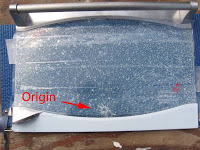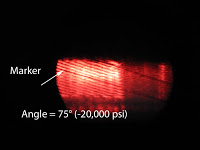Glass failure analysis often requires understanding of safety glass. Normal window glass is in the annealed state. Therefore, it will break into large sharp shards that can injure a person who breaks through it. In order to reduce the probability of failure and the possibility of injury two types of safety glass have been developed. The first is laminated safety glass, and the other is tempered safety glass (i.e. surface compression stress >10,000 psi). Automobile windshields and hurricane resistance windows are made from laminated safety glass. These are special applications, and laminated safety glass is appropriate, even though it is more expensive. In most other safety glass applications, thermally tempered safety glass is used. These windows are safer because they are stronger and because they break into small “blocks” when they fail. These two factors significantly reduce but do not eliminate the probability of injury to anyone that breaks through the glass. There are two prevalent techniques to evaluate the level of temper in glass. One is to measure the surface compression stress with a grazing angle surface profilometer (GASP); the other is to break the tempered glass per UL guidelines and measure the area of the largest remaining pieces. The photographs above show the two methods. Upper left is a photograph of the fringe pattern of a tempered 9″ X 13″ X 4 mm thick glass oven door taken through a Strainoptic Technologies GASP. This image shows the compressive surface stress to be -20,000 psi. Upper right is a photograph of the same door after the UL fragmentation test (i.e. using a center punch to penetrate the compressive layer). One can see that the resulting pieces are extremely small. In general, the pieces are aqlmost cubic.






